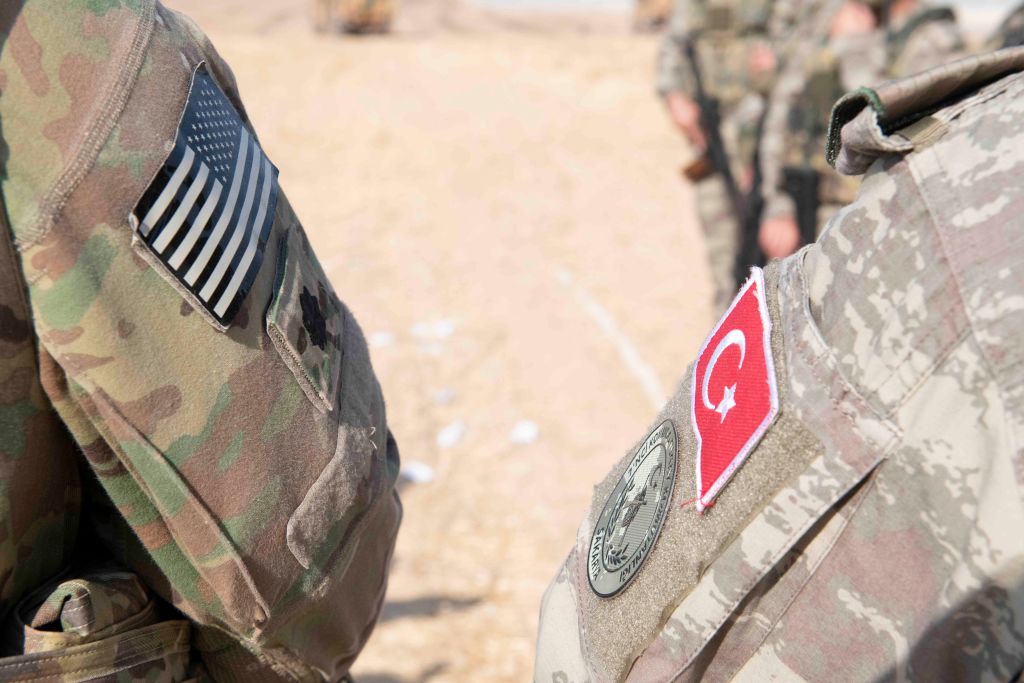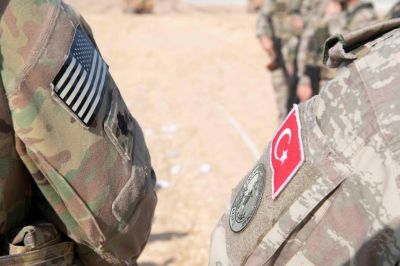In recent weeks U.S. forces made multiple airstrikes against Iran-backed Houthi rebels in Yemen in an effort to stop their disruption of commercial shipping in the Red Sea.
But the U.S. hasn’t done that work alone—it’s had the help of the United Kingdom, Canada, the Netherlands, and several other countries in carrying out those strikes. For most modern militaries, working with coalitions is the rule, not the exception.
What is a coalition?
In a coalition—“a temporary alliance of distinct parties, persons, or states for joint action,” according to Webster—the two key terms are “temporary” and “action.” One defines the “what” and the other the “why” of states with often disparate interests coming together to achieve some particular objective.
In a technical sense, coalitions differ in both level of commitment and legal standing from other multinational military groupings such as alliances, partnerships, or ad hoc combined operations. The U.S. National Defense Strategy defines allies as countries with which we have formal, long-term relationships and generally backed by treaties (NATO, for example), while partnerships usually focus on something mutually beneficial during a specific amount of time or for specific circumstances, as with the current Prosperity Guardian operation designed to prevent the Houthis in Yemen from interfering with freedom of navigation in and around the Red Sea. The most recent airstrikes conducted in Yemen were conducted by a subset of Prosperity Guardian participants and distinct from that mission—an example of ad hoc operations involving two or more nations’ forces. This generally indicates a rift in the partnership or coalition over some combination of ends and means, allowing more aggressive members to act while providing plausible deniability or even a protest vote to more passive states.
In practice, partnerships and coalitions are mostly indistinguishable, with the latter sometimes considered more formal or enduring and the former allowing cover for some participants through looser definitions of what’s actually been agreed to. News outlets tend to use the terms coalition, partnership, or alliance interchangeably. So, while including the more formal “alliance” in that mix misses the mark, differentiating between partnerships and coalitions is a distinction without a difference for most audiences. And throwing “ad hoc” in front of any of those terms just implies shorter timelines and more specific short-term objectives.
Why a coalition?
Arguing against a coalition is easy when you’re the 600-pound gorilla in the room. They slow down decision making. They force compromises in ends and means. And, like any committee, they include personalities, animosities, and agendas that must be pleased, placated, and addressed. If you’re in a hurry with vital interests threatened, going it alone is certainly easier and often more effective if you’ve got the means to do it. The Cold War provided numerous examples of the U.S. taking this route, including Panama, Grenada, Iran, and many more limited interventions where the we had overwhelming military superiority and the cost of bringing others onboard carried limited benefits with potentially high diplomatic or material costs and risks.
But that’s not always the case, especially when overriding goals of international legitimacy or others’ national honor are important to the eventual end state. In that case, it may be best to spread the glory (or blame) by including stakeholders—real or perceived—and putting up with the inefficiencies and added costs that may involve. Iraq and Jordan, for example, are part of the anti-ISIS coalition because having a U.S. military presence and conducting combat operations on their soil would be humiliating to them if they didn’t share in decision-making.
Coalitions also can have practical benefits. Logistics are much more manageable with access to ports and airfields in the conflict area, as demonstrated today by our use of numerous ports and airfields in Persian Gulf states and Saudi Arabia. Local intelligence services often have a much better picture of facts on the ground. High-tempo operations may outpace U.S. local or regional capabilities. Diplomatic and personal contacts and access can be critical to prevent escalation or encourage resolution. For a military with global responsibilities like ours, even minor burden sharing in critical places or at critical times can make a significant difference in the cost/benefit analysis of intervention decision-making or eventual success.
Then there is the issue of legitimacy.
Whether it’s the combatting the old Axis of Evil or the current Axis of Resistance, having dozens of nations supporting your overall goals lends much more validity to your actions than just a few outlier regimes noisily working to upend the status quo. This can be true whether the coalition partners make real contributions to the military effort or are just providing moral or diplomatic support.
Do coalitions work?
Do-overs in war are rare. For that reason, there aren’t many counterfactuals to study and determine whether a particular conflict would have come out differently with or without a coalition. But it is possible to look back at history and examine some of the factors that contribute to success or failure in uniting states with some combination of overlapping and clashing national interests behind a set of defined military and diplomatic objectives.
But it’s difficult to determine whether, say, Afghanistan would have worked out differently if the U.S. weren’t limited by differing and often restrictive rules of engagement among coalition partners. Having to constantly check which coalition partners could conduct what types of operations while still ensuring they did enough to report their contributions back home often tied U.S. forces’ hands and complicated decision making. Who knows what opportunities may have been missed? Would Vietnam have gone differently if we had convinced more regional partners of Domino theory arguments and got them more directly involved militarily or diplomatically? Could Japan, Indonesia, or even China have been enlisted to press Hanoi toward a peaceful solution if we were willing to compromise on some of our objectives, or even just better understand the objectives and motivations of both North and South Vietnam? Reasonable people will differ, and undoubtedly do. But since war is politics by other means, at least for democracies, coalition warfare is here to stay.






Please note that we at The Dispatch hold ourselves, our work, and our commenters to a higher standard than other places on the internet. We welcome comments that foster genuine debate or discussion—including comments critical of us or our work—but responses that include ad hominem attacks on fellow Dispatch members or are intended to stoke fear and anger may be moderated.
With your membership, you only have the ability to comment on The Morning Dispatch articles. Consider upgrading to join the conversation everywhere.